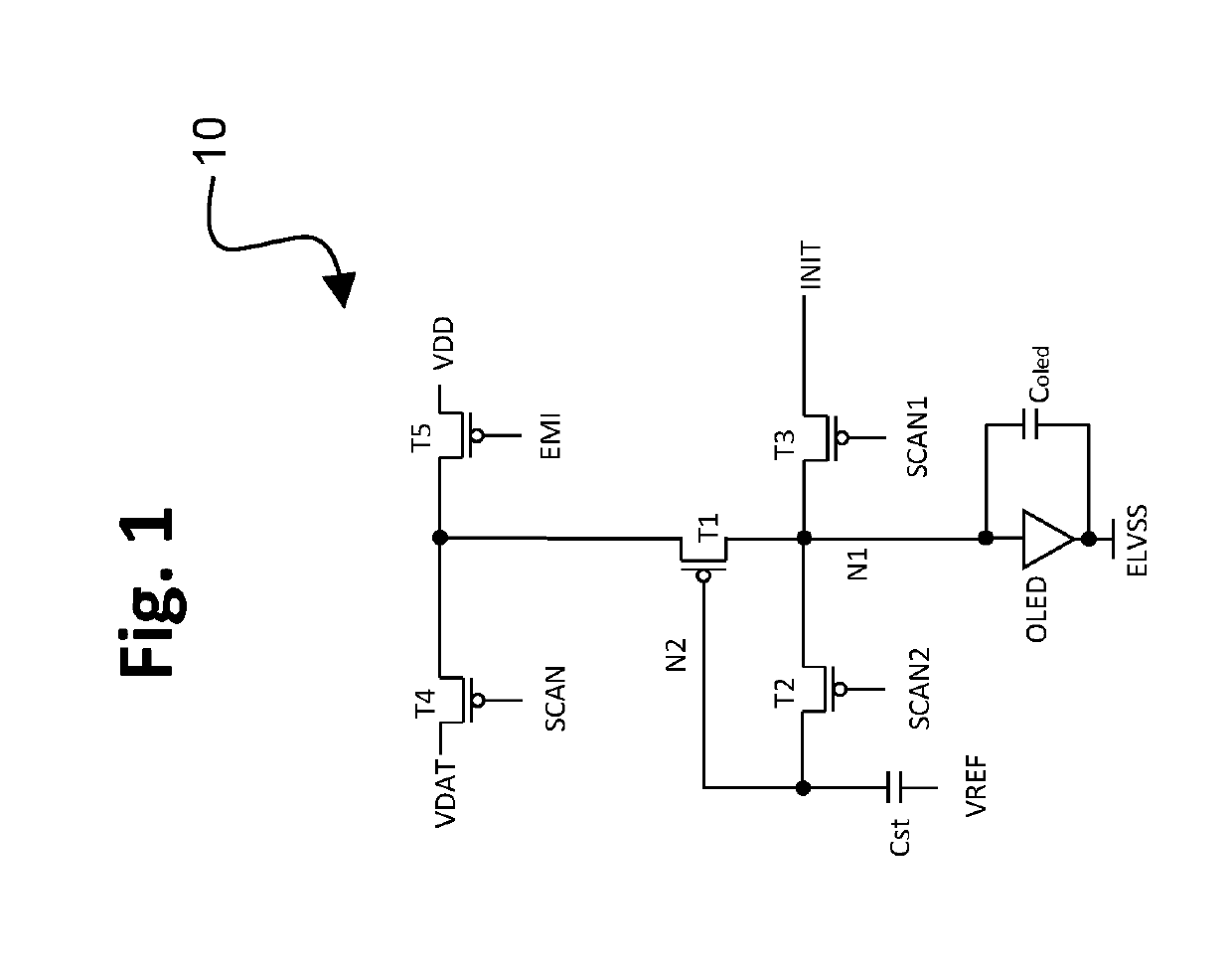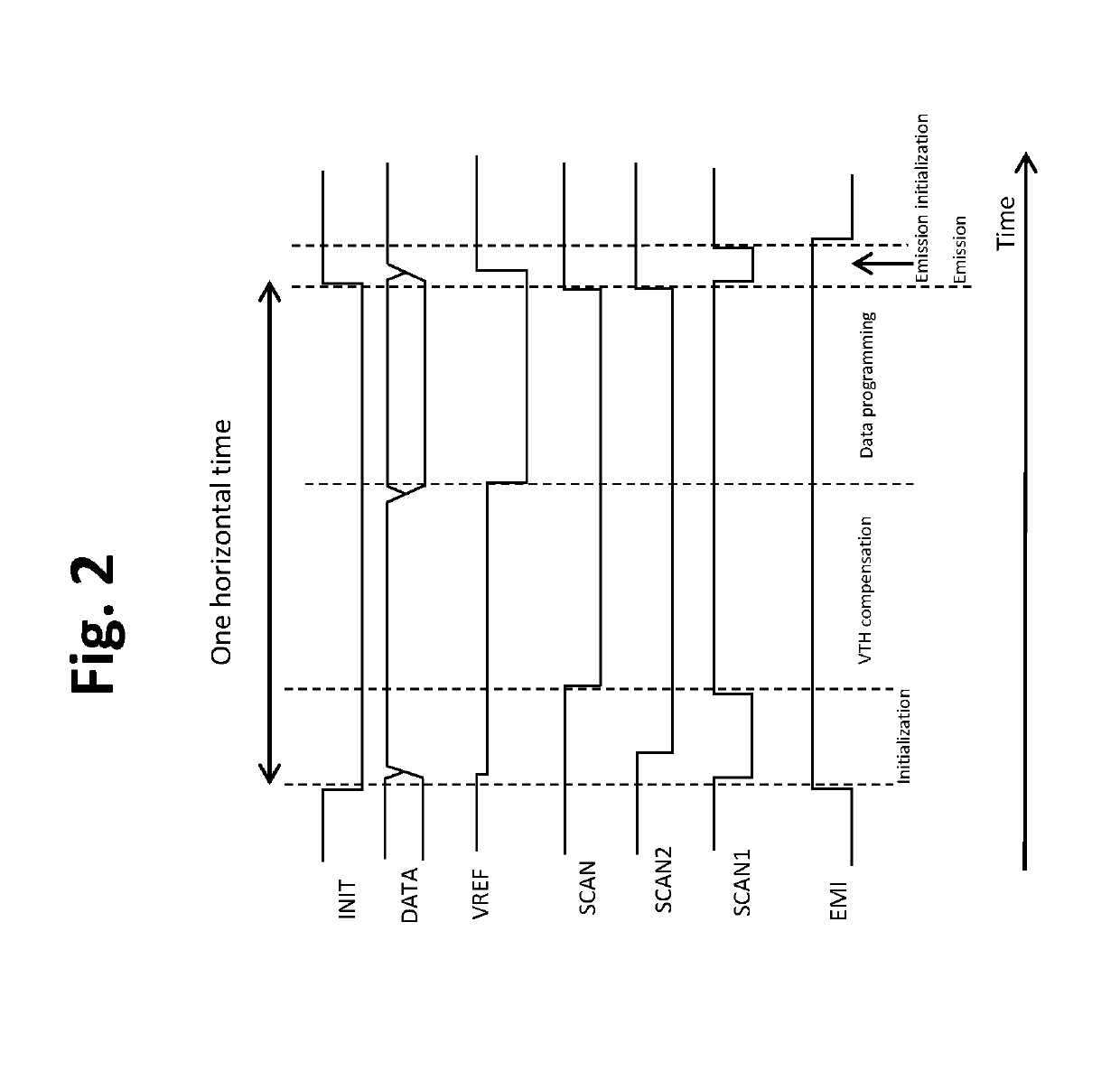TFT pixel threshold voltage compensation circuit with light-emitting device initialization
- Summary
- Abstract
- Description
- Claims
- Application Information
AI Technical Summary
Benefits of technology
Problems solved by technology
Method used
Image
Examples
first embodiment
[0040]In this first embodiment, during the first initialization phase memory effects from residual voltages from the previous frame are essentially eliminated. At the outset, an EMI signal level is set to a high voltage value, causing transistor T5 to be off. Consequently, the source of the drive transistor T1 is disconnected from a second power supply, VDD. In addition, an initialization voltage signal (INIT) is changed from a high reference voltage level, INIT_H, to a low reference voltage level INIT_L. Preferably, INIT_H is similar to the voltage at the anode of the OLED that results in the lowest light emission from the OLED during the emission phase for typical operation of the display. Accordingly, INIT_L, being lower than INIT_H, has a value that may reverse bias the OLED, i.e., INIT_L may be is less than ELVSS. The value of INIT_L also should be set so as not to cause significant degradation of the OLED.
[0041]Further during the first initialization phase, a SCAN1 signal leve...
second embodiment
[0086]The advantages may be achieved using as few as only five transistors and one storage capacitor, thereby providing a smaller circuit as compared to conventional configurations. By the addition of a sixth transistor in the second embodiment, although the circuit size is increased, the circuit size still is small as compared to conventional configurations, and a significantly shortened horizontal time is achieved.
[0087]The various embodiments have been described in connection with OLEDs as the display light-emitting device. The circuit configurations, however, are not limited to any particular display technology. For example, the circuit configurations also may also be used for micro LED displays, quantum dot LED displays, or any other device which emits light in response to an applied electrical bias. A micro LED, for example, is a semiconductor device containing a p-type region, an n-type region and a light emission region, for example formed on a substrate and divided into ind...
PUM
 Login to View More
Login to View More Abstract
Description
Claims
Application Information
 Login to View More
Login to View More - R&D
- Intellectual Property
- Life Sciences
- Materials
- Tech Scout
- Unparalleled Data Quality
- Higher Quality Content
- 60% Fewer Hallucinations
Browse by: Latest US Patents, China's latest patents, Technical Efficacy Thesaurus, Application Domain, Technology Topic, Popular Technical Reports.
© 2025 PatSnap. All rights reserved.Legal|Privacy policy|Modern Slavery Act Transparency Statement|Sitemap|About US| Contact US: help@patsnap.com



